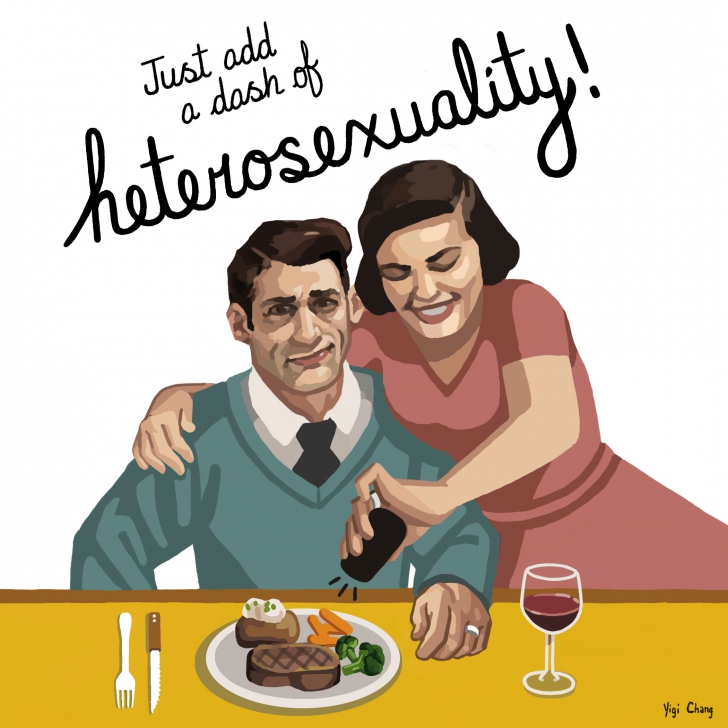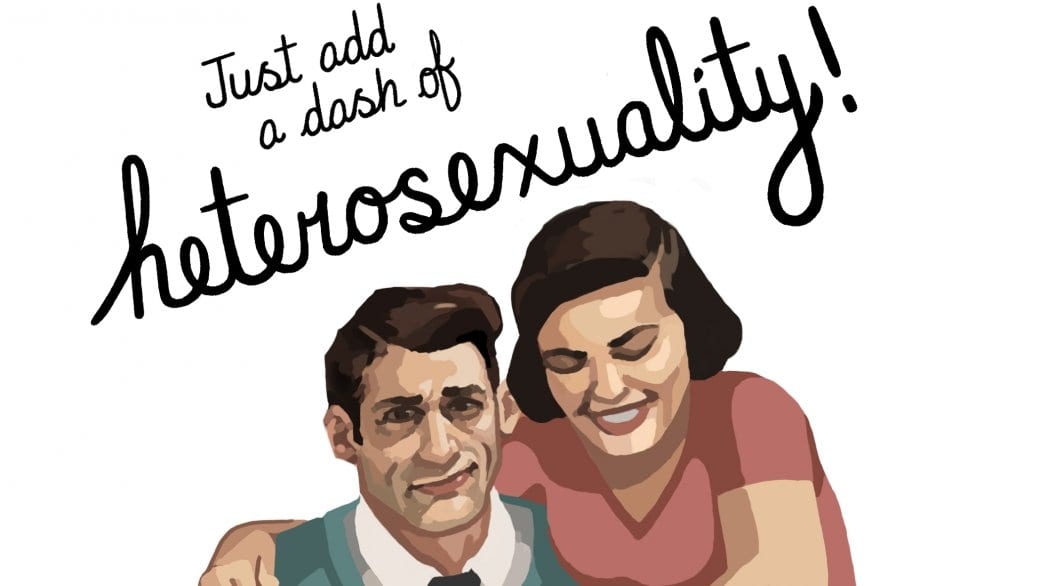Heterosexuality is one of the most successful brands that has ever existed. When you join the ranks of the heterosexuals, you become a member of an exclusive club that has a myriad of social, legal and logistic benefits. Heterosexuals can travel anywhere, get any job, claim mastery over anything and never be questioned about their legitimacy as a person. Well, unless you’re a heterosexual woman. Or a heterosexual person of colour. Or a heterosexual transgender person. Or a heterosexual poor person . . . okay, so there are some conditions, but it’s mostly a good gig!
Of course, the market preceded the brand. Consider that Emily Brontë’s Wuthering Heights, taught in my high school as the epitome of romanticism — a book about crazy, incestuous heteros — preceded the term “heterosexual” by more than 20 years. Even after Karl-Maria Kertbeny employed the word in a letter to a colleague in 1868, the word didn’t begin to filter into the mainstream lexicon until it was adopted by Austro-German psychiatrist Richard von Krafft-Ebing.
Krafft-Ebing’s foundational work, Psychopathia Sexualis, did not set out to make the word “heterosexual” popular as a term for men who had sex with women, and vice versa. “With opportunity for the natural satisfaction of the sexual instinct, every expression of it that does not correspond with the purpose of nature,— ie, propagation,— must be regarded as perverse,” wrote Krafft-Ebing. His book goes on to be a categorization of all things kinky and perverse for the sake of doctors and lawmakers in the fight against sexual misconduct.

And boy, were there ever so many ways to get it wrong, even for heteros. “Paradoxia” was sexual arousal at the wrong time of life, like when you’re too old or too young. “Hyperaesthesia” meant you liked sex too much, “anaesthesia” meant you liked sex too little. “Paraesthesia” was what happened when sexual desire was misdirected, like towards children, animals, kinky sex or people of the same sex. Heterosexuality was used alongside “normal-sexual” interchangeably, and made a few appearances in Krafft-Ebing’s work, but not prominently, and didn’t get an English translation until 1893. Funny enough, heterosexual was used in English the year before, but this writer interpreted “hetero” to mean “both,” and referred to what we’d call bisexuals; some dictionaries initially aped this definition. Not until 1934 did “heterosexual” as we know it appear in the Merriam-Webster dictionary.
In the early 20th century, heterosexuals became a hot commodity. An erosion of social traditions gave rise to new modes of courtship, or “dating.” Men were suddenly taking women out of the previous family-controlled settings of courtship, out to a meal or entertainment. Women began to pump money into “female beauty” consumer culture: flattering and appealing clothing, cosmetics, perfume and grooming became essential. Think of all the insane advertisements you’ve seen making the rounds online: “She can have a tummy… and still look yummy!” for Chubbettes, fashion to make plus size women look slimmer. “Two more shots for the cause,” accompanies a sexy, young couple sitting in a traditional marriage pose, the suited man’s hand on the shoulder of the woman — both dedicated to their Scotch loyalty, and presumably each other.
The money you put into a date could have serious advantages, with social benefits that came from being seen as available or marriageable. This catapulted dating consumer culture into the marketing realm, which influenced popular culture, which inspired dating people to feats of monetary romanticism and investment in appearance, which created more demand for consumer products, and so on. It became a vicious heterosexual cycle of buying things to sell yourself to a partner. By the 1950s, the social norm was to “go steady,” with new terms like “boyfriends” and their “girlfriends,” a model of monogamy essentially emulating marriages.
In 1961, a professor at Pennsylvania State conducted a study finding that about 40 percent of fifth graders were already dating, a post-war trend that coincided with a drop in the age of marrying couples, with its own ramifications for consumer culture. This is much where we find ourselves today. Arguments for same-sex marriage are often along the lines of the business it will bring to consumer industry, and it’s impossible to ignore the model of desirability-by-buying that gay male culture seems trapped in. While queer people have arguably disrupted the heterosexual-economic model, many of us seem perfectly happy buying our way into it without question. Now that’s some damn good branding.
History Boys appears on Daily Xtra on the first and third Tuesday of every month. You can also follow them on Facebook.


 Why you can trust Xtra
Why you can trust Xtra


